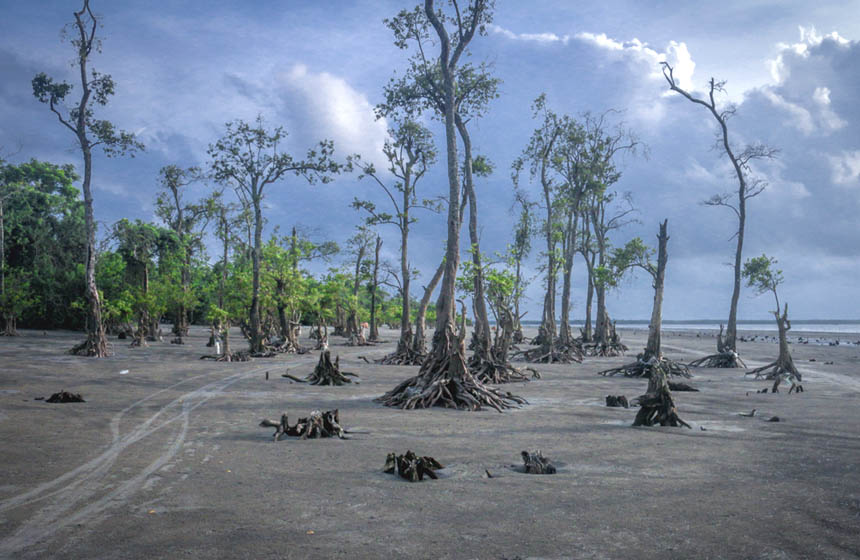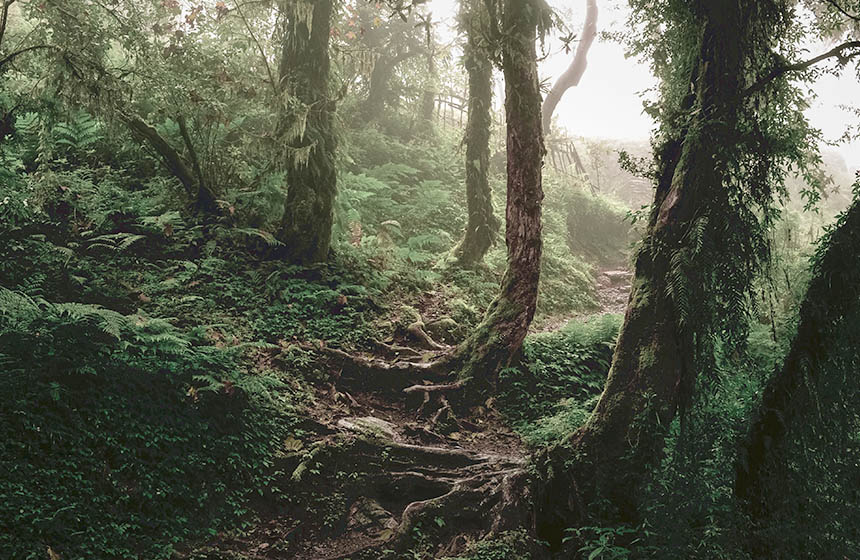Community reforestation to enhance the buffer zone surrounding a landfill site
A 787 ha buffer zone around the Buffelsdraai Landfill Site was previously under sugarcane production and has been changed into a community reforestation project.
Nature-based Intervention:
The Wildlands Conservation Trust’s implemented the Indigenous Trees for Life Programme surrounding the landfill site. This Programme allows for local unemployed residents to become ‘Tree-preneurs’, where they set up small-scale indigenous tree nurseries. These trees are then bought for credits by the reforestation project to be utilized at the landfill site. The credits can be utilized to purchase groceries, bicycles, building materials, cover school fees, or to receive vehicle driving lessons. There have been over 786,894 trees and other plants of over 141 species planted on 712 ha of land so far utilizing this model. These new trees also provide an important forest barrier protecting the local community from noise and air pollution from the landfill, while simultaneously capturing carbon and increasing habitat availability for local species.
Overview of context and outcomes:
The Buffelsdraai Landfill Site is the largest regional waste landfill within the eThekwini Municipality and the 787 ha buffer zone around it had previously been used to farm sugarcane for almost 100 years. The project to restore this buffer zone landscape was initialized by the nearby city of Durban in order to offset the emissions it would release for hosting part of the 2010 FIFA World Cup™.
Case effectiveness on
Climate change
The project is reportedly on track to sequester 42,214 tCO2 over a 20-year period due to the reforestation of the area.
Ecosystem health
Ecological effect: PositiveThe intervention helped improve habitat quality and habitat extent within the landscape. It is reported that surveys of native birds species found an increase from 91 to 197 recorded species after the reforestation had begun.
Socioeconomic outcomes
The project reportedly created 99 full-time, 24 part-time and 512 temporary jobs through its implementation. These employees received a total of 32,000 days of training in relation to site management and tree care which could be applied within the labour market. Surveys conducted in the community in relation to food security reportedly found that
the number of community members who “sometimes go hungry the whole day” was reduced from 80% to less than 50% during the course of the project. It is reportedly approximated that from 2009-2015 the intervention generated R13,000,000 ZAR (£655,194 GBP) in social benefits for the local community.
Governance
The initial project was governed and implemented by the Wildlands Conservation Trust through their Indigenous Trees for Life Programme. They work in collaboration with the EThekwini Municipality Environmental Planning and Climate Protection Department, which takes over management and monitoring of the project after implementation has been completed.
Finance
The total funding for the project was R139,440,000 (ZAR) (or approximately £7,027,706 GBP). The largest funder was the Ethekwini Municipality which contributed R100,000,000 (ZAR), with the Department of Environmental Affairs contributing R36,940,000 (ZAR) and the Danish International Development Agency R2,500,000 (ZAR).
Monitoring and evaluation
the project has regular monitoring of carbon stocks studies evaluating biodiversity, and socio-economic surveys of neighboring communities also taking place. The project has designed a time table of annual and five-year measurements of success indicators surrounding carbon, biodiversity, and local communities.
Trade-offs and limitations
While the previous sugarcane plantations did create employment opportunities, the employees mainly came from nearby Lesotho and few benefits were created for the local communities which have to live in proximity to the landfill site.

Intervention type
- Created habitats
Ecosystem type
- Created forest
Instigators
- State/district/local government agency
- National conservation/environment organisation
Societal challenges
- Biodiversity conservation
- Climate change mitigation
- Economic and Social development
- Food security
Outcomes
- Food security: Positive
- Water security: Not reported
- Health: Not reported
- Local economics: Positive
- Livelihoods/goods/basic needs: Positive
- Energy security: Not reported
- Disaster risk reduction: Not reported
- Rights/empowerment/equality: Not reported
- Conflict and security: Positive
- No. developmental outcomes reported: 4
Resources
Read resource 1Read resource 2
Read resource 3
Literature info
- Grey literature
- Peer reviewed



